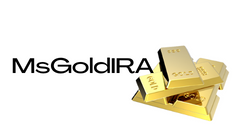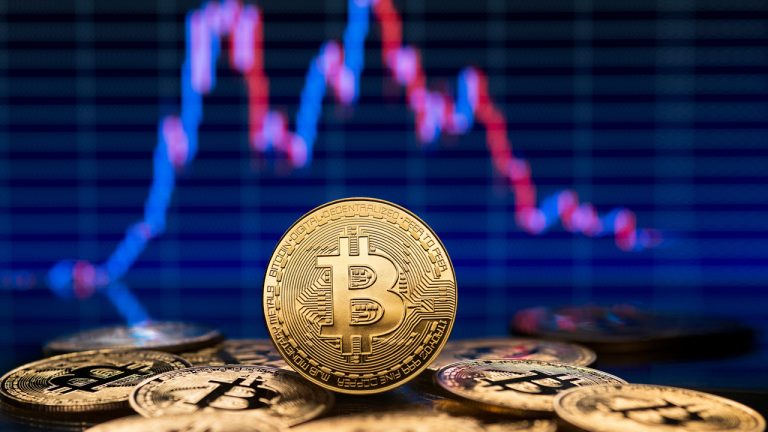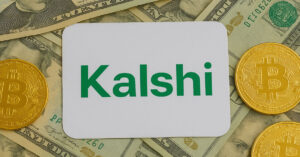
Reduced NAV Discount Prompts GBTC Outflows
Last week, the U.S. Securities and Exchange Commission (SEC) approved the launch of 11 diverse spot bitcoin exchange-traded funds (ETFs). These new ETFs generated a significant trading volume of $7.65 billion in just their first two days on the market. However, Grayscale's GBTC experienced notable outflows during the same period, coinciding with the fund's discount to net asset value (NAV) reaching its lowest point since February 2021.
Analyst Eric Balchunas Observes GBTC Outflows
Eric Balchunas, the senior ETF analyst for Bloomberg, recently commented on the "nine newborn" spot bitcoin ETFs, which have gathered an impressive $1.4 billion in cash. Balchunas noted that this influx of capital significantly exceeds the $579 million outflow from the Grayscale Bitcoin Trust (GBTC), resulting in a net investment growth of $819 million. He also highlighted that these new ETFs boasted an average premium of 20 basis points.
When asked about the significant withdrawal from GBTC, Balchunas explained that many traders entered the market to take advantage of the closing discount and are now leaving to realize their profits. Additionally, there are average investors who may have decided to endure the tax implications in order to escape GBTC's high 1.5% fee. Balchunas predicts that more outflows from GBTC can be expected in the future.
GBTC's NAV Discount and Management Fees
Onchain analysts have observed a significant movement of 4,000 BTC, valued at $175 million, exiting GBTC's bitcoin wallet holdings. This coincides with GBTC's discount to its NAV reaching its lowest point since February 2021. Previously, GBTC had a premium status before February 23, 2021. Additionally, Grayscale's ETF management fees are the highest among the 11 ETFs approved last week.
Comparatively, seven of the newly approved ETFs have management fees below 0.30%, with Bitwise's BITB leading at a minimal 0.20% fee. Other ETFs such as Ark's ARKB, Fidelity's FBTC, Blackrock's IBIT, Valkyrie's BRRR, and Vaneck's HODL offer competitive 0.25% fees. Franklin Templeton's EZBC has a fee of 0.29%, while Wisdomtree's BTCW charges 0.30%. Invesco's fee is slightly higher at 0.39%. Hashdex's DEFI fund has the highest fee at 0.94%, approaching GBTC's substantial 1.5% management fee. The more favorable fees of these new ETFs could be a factor in investors shifting away from GBTC.
The Appeal of New ETFs and GBTC's Dominance
One appealing incentive for U.S. investors is the temporary waiver of management fees offered by seven of the 11 newly approved spot bitcoin ETFs. Early investors can participate in these ETFs without incurring any fees for a limited time. This is a significant change from GBTC, which previously charged a 2% management fee when it was traded over-the-counter (OTC). The fee was reduced in anticipation of the ETF transition. Despite the outflows, GBTC still holds a formidable 618,000 BTC, significantly surpassing the recent inflows to the new ETFs.
What are your thoughts on GBTC's outflows? Share your opinions in the comments section below.
Frequently Asked Questions
Can I store my gold IRA in my home?
An online brokerage account will allow you to invest in the most secure way possible. You have all the investment options you'd get if you had a traditional broker. However, you don't require any licenses or qualifications. You won't pay fees to invest.
Online brokers often offer free tools to help manage your portfolio. Many online brokers allow you to download charts that will show how your investments are performing.
How do I choose the right IRA for me?
The first step to finding an IRA for you is understanding your account type. This is whether you want a Roth IRA, a traditional IRA, or both. Also, you should know how much money is available for investment.
The next step in determining the right provider for your situation is to decide. While some providers offer both accounts, others specialize in only one.
Finally, you should consider the fees associated with each option. Fees can vary greatly between providers, and may include annual maintenance charges and other fees. One example is that some providers charge a monthly subscription based upon the number of shares you hold. Others will only charge once a quarter.
What precious metals can be allowed in an IRA?
The most commonly used precious metal in IRA accounts is, of course, gold. Also available as investments are bars and bullion gold coins.
Precious Metals are safe investments since they don’t lose value over the long-term. They are also an excellent way to diversify your investment portfolio.
Precious Metals include palladium, silver, and platinum. These three metals have similar properties. Each has its own purpose.
In jewelry making, for instance, platinum is used. Palladium is used to create catalysts. For producing coins, silver is used.
You should consider the amount you will spend on your gold before you decide which precious metal. It may be more cost-effective to purchase gold at lower prices per ounce.
Also, think about whether or not you wish to keep your investment secret. If you have the desire to keep your investment private, palladium might be the best choice.
Palladium is more valuable than gold. But it's also less common. This means you might have to spend more.
The storage fees of gold and silver are also important factors to consider when making a decision between them. Gold is measured by weight. So you'll pay a higher fee for storing larger amounts of gold.
Silver is stored by volume. Therefore, smaller amounts of silver will cost less.
Follow all IRS rules regarding silver and gold if you are storing precious metals within an IRA. This includes keeping track of transactions and reporting them to the IRS.
Statistics
- To qualify as IRA allowable precious metals and be accepted by STRATA, the following minimum fineness requirements must be met: Gold must be 99.5% pure, silver must be 99.9% pure, and platinum and palladium must both be 99.95% pure. (stratatrust.com)
- Depending on your financial situation, most experts recommend you invest no more than 5% to 10% of your retirement funds in precious metals. (forbes.com)
- If you accidentally make an improper transaction, the IRS will disallow it and count it as a withdrawal so that you would owe income tax on the item's value and, if you are younger than 59 ½, an additional 10% early withdrawal penalty. (forbes.com)
- The IRS also allows American Eagle coins, even though they do not meet gold's 99.5% purity standard. (forbes.com)
External Links
takemetothesite.com
kitco.com
regalassets.com
en.wikipedia.org
How To
How to transfer your IRA into a gold IRA
You want to convert your retirement savings from a traditional IRA to a gold IRA. This article will assist you in that endeavor. Here are some tips to help you switch.
“Rolling Over” refers to the process of transferring money between two types of IRAs (traditional and gold). Rolling over an account offers tax advantages. People may also prefer to invest physical assets, such precious metals.
There are two types of IRAs — Traditional IRAs and Roth IRAs. The difference between the two accounts is simple. Roth IRAs have no tax deductions, but Traditional IRAs can deduct taxes. If you invest $5,000 in a Traditional IRA now, then you'll be able only to withdraw $4,000. If you invested the same amount in a Roth IRA, however, you'd be able to keep every penny.
These are some things to consider if you plan to convert from a Traditional IRA to a Gold IRA.
First, you need to decide whether to roll over your current balance into a new account or simply transfer funds from your old account to your new one. Any earnings over $10,000 will be subject to income tax at the regular rate. However, if you roll over your IRA, those earnings won't be subject to tax until you reach age 59 1/2.
Once you have decided to open a new bank account, You'll likely be required to provide proof of identities, such as a Social Security card, passport, and birth certificate. You will then need to fill out paperwork proving that you have an IRA. After you have completed the forms, submit them to your bank. They will verify your identity as well as give instructions on how to send wire transfers and checks.
The fun part is here. You'll deposit cash into your new account and wait for the IRS to approve your requests. Once you have received approval, you will receive a letter that allows you to withdraw funds.
That's it! Now you can just sit back and enjoy the growth of your money. And remember, if you ever change your mind about converting your IRA, you can always close it out and roll over the remaining balance into a new IRA.
—————————————————————————————————————————————————————————————-
By: Jamie Redman
Title: GBTC’s Closing NAV Discount and Steep Fees Trigger Outflows, ETF Analyst Expects ‘More Over Time’
Sourced From: news.bitcoin.com/gbtcs-closing-nav-discount-and-steep-fees-trigger-outflows-etf-analyst-expects-more-over-time/
Published Date: Sat, 13 Jan 2024 14:30:07 +0000













